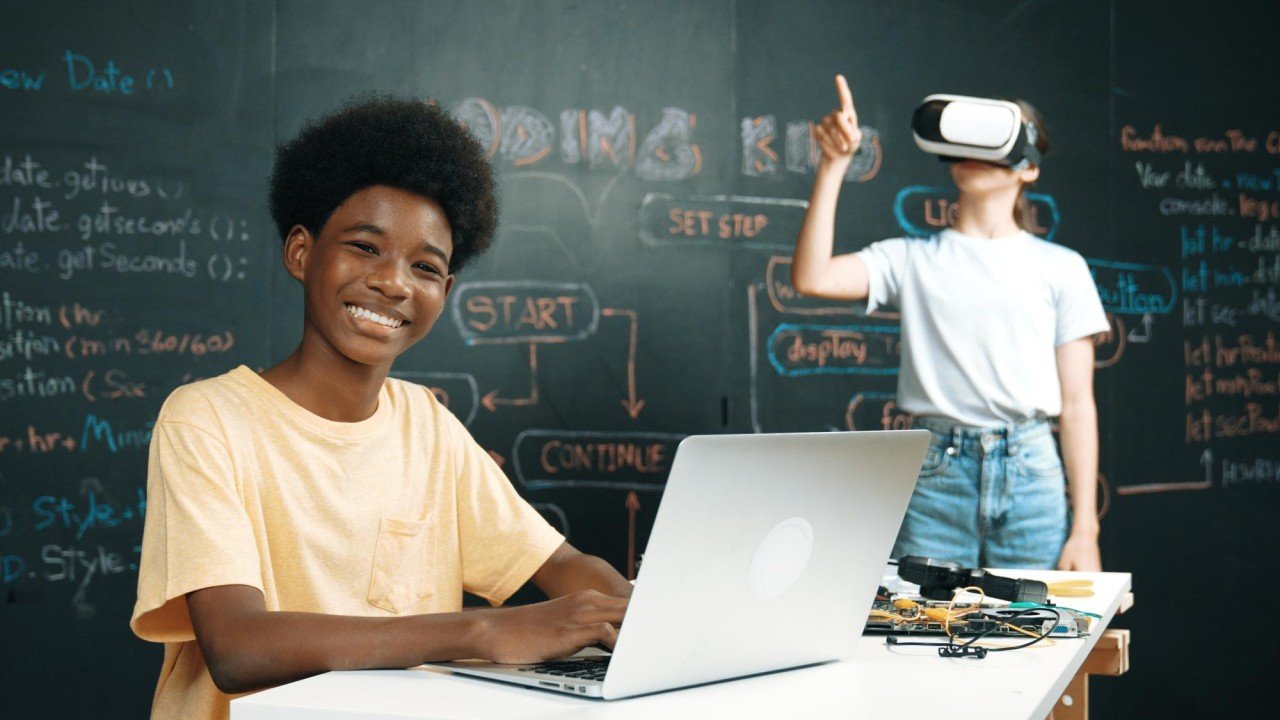Teachers Embracing Technology: The Future of Digital Classrooms
In an era defined by rapid technological advancement, the landscape of education is undergoing a profound transformation. Modern classrooms bear little resemblance to those of previous generations, with interactive whiteboards replacing chalkboards and tablets supplanting textbooks. This ongoing digital revolution is powered by tech innovations that continue to redefine what’s possible in educational environments. From artificial intelligence to virtual reality, these tools are expanding the boundaries of traditional teaching and learning.
How Digital Tools are Reshaping Education
The integration of technology into educational settings has revolutionized instructional methodologies across all grade levels. Cloud-based learning management systems now facilitate seamless collaboration between students and educators, while adaptive learning platforms personalize education to accommodate diverse learning styles and abilities.
This digital transformation has accelerated dramatically in recent years, propelled in part by global events that necessitated remote learning solutions. What began as emergency measures has evolved into permanent features of contemporary education, with technology becoming an indispensable component of effective teaching strategies.
The Impact on Student Engagement
Teachers report that technology integration significantly enhances student engagement and participation. Digital tools transform passive learners into active participants, enabling interactive experiences that capture attention and stimulate curiosity. Gamification elements, such as achievement badges and progress tracking, leverage students’ natural affinity for gaming to boost motivation and retention.
Research indicates that properly implemented technology can increase information retention by making learning more experiential and memorable. When students actively engage with material through interactive simulations, virtual experiences, or creative digital projects, they develop deeper understanding and more enduring knowledge.
See also: Predicting the Next Big Thing in Tech
Breaking Down Geographic and Socioeconomic Barriers
One of the most transformative aspects of educational technology is its potential to democratize access to quality education. Virtual classrooms and online resources can reach students in remote or underserved areas, providing opportunities previously unavailable due to geographic or socioeconomic limitations.
Key Technologies Transforming Education
Several innovative technologies stand at the forefront of this educational revolution:
- Artificial Intelligence and Machine Learning: AI-powered tutoring systems adapt to individual learning patterns, providing personalized guidance and support. These systems identify knowledge gaps and tailor content accordingly, functioning as tireless teaching assistants that accommodate each student’s unique needs.
- Augmented and Virtual Reality: Immersive technologies transport students to otherwise inaccessible environments—from ancient civilizations to microscopic cellular structures. These experiential learning tools transform abstract concepts into tangible experiences, making complex subjects more accessible and engaging.
- Learning Analytics: Sophisticated data analysis tools provide educators with unprecedented insights into student performance, enabling targeted interventions and more effective teaching strategies. By identifying patterns and trends, these systems help teachers optimize their approaches for maximum impact.
The Evolution of Educational Content
Beyond hardware and software, technology has revolutionized educational content itself. Interactive e-textbooks incorporate multimedia elements, simulations, and self-assessment tools that traditional printed materials cannot match. Open educational resources (OERs) provide free, customizable materials that reduce costs and expand access to quality content.
Challenges in Technology Implementation
Despite its transformative potential, educational technology implementation faces significant obstacles:
Digital Equity Concerns
The “digital divide” remains a critical challenge, with disparities in access to devices and reliable internet connections creating inequitable learning opportunities. These gaps often correlate with existing socioeconomic disparities, potentially exacerbating educational inequality if not deliberately addressed.
Professional Development Needs
Many educators require comprehensive training and ongoing support to effectively leverage educational technologies. Without adequate professional development, even the most innovative tools may fail to achieve their intended impact. Schools and districts must invest in building teacher capacity alongside technological infrastructure.
Balancing Technology With Traditional Methods
Finding the appropriate balance between technological innovation and proven traditional methods represents an ongoing challenge. Technology should enhance rather than replace effective teaching practices, serving as a powerful tool in a comprehensive educational approach.
Preparing Teachers for Digital Classrooms
As technology continues to transform education, teacher preparation programs must evolve to equip future educators with the necessary skills and mindsets:
Developing Digital Literacy
Modern teachers require robust digital literacy skills to navigate rapidly evolving technological landscapes. These competencies include not only operational abilities but also critical evaluation of digital resources, understanding of data privacy implications, and creative problem-solving using technological tools.
Fostering Adaptability and Lifelong Learning
Perhaps most importantly, educators must develop adaptability and commitment to continuous learning. As technologies evolve at an accelerating pace, the ability to learn new systems and approaches becomes as important as mastery of current ones.
The Future of Tech-Enhanced Teaching
Looking ahead, several emerging trends will likely shape the future of educational technology:
- Hybrid and Blended Learning Models: Combinations of in-person and online instruction will become standard practice, offering flexibility and expanded learning opportunities while maintaining critical human connections.
- Personalized Learning Ecosystems: AI-driven systems will create increasingly sophisticated personalized learning pathways, adapting in real-time to student performance and preferences.
- Immersive Learning Environments: Advanced VR/AR technologies will create fully immersive educational experiences that engage multiple senses and learning modalities.
- Blockchain for Educational Credentials: Secure, verifiable digital credentials will transform how educational achievements are documented and shared.
Ethical Considerations
As we embrace these technological innovations, ethical considerations must remain paramount. Issues of data privacy, algorithmic bias, and equitable access require thoughtful policies and ongoing vigilance to ensure technology serves as a force for educational equity rather than division.
Conclusion
The integration of technology into education represents one of the most significant transformations in the history of teaching and learning. When implemented thoughtfully, with adequate support and training, these tools have unprecedented potential to enhance educational experiences and outcomes.
The most successful approaches will be those that view technology not as an end in itself, but as a powerful means to achieve fundamental educational goals: inspiring curiosity, developing critical thinking, fostering creativity, and preparing students for future challenges and opportunities.
As we navigate this ongoing transformation, collaboration between educators, technologists, policymakers, and communities will be essential. By working together, we can harness the power of technology to create more engaging, effective, and equitable educational experiences for all students.
The digital classroom of tomorrow will undoubtedly incorporate technologies we can scarcely imagine today. What remains constant is the irreplaceable role of teachers as guides, mentors, and facilitators in this evolving landscape. The future of education lies not in technology replacing educators, but in empowering them with tools that amplify their impact and reach, enabling them to inspire and support students in new and powerful ways.






